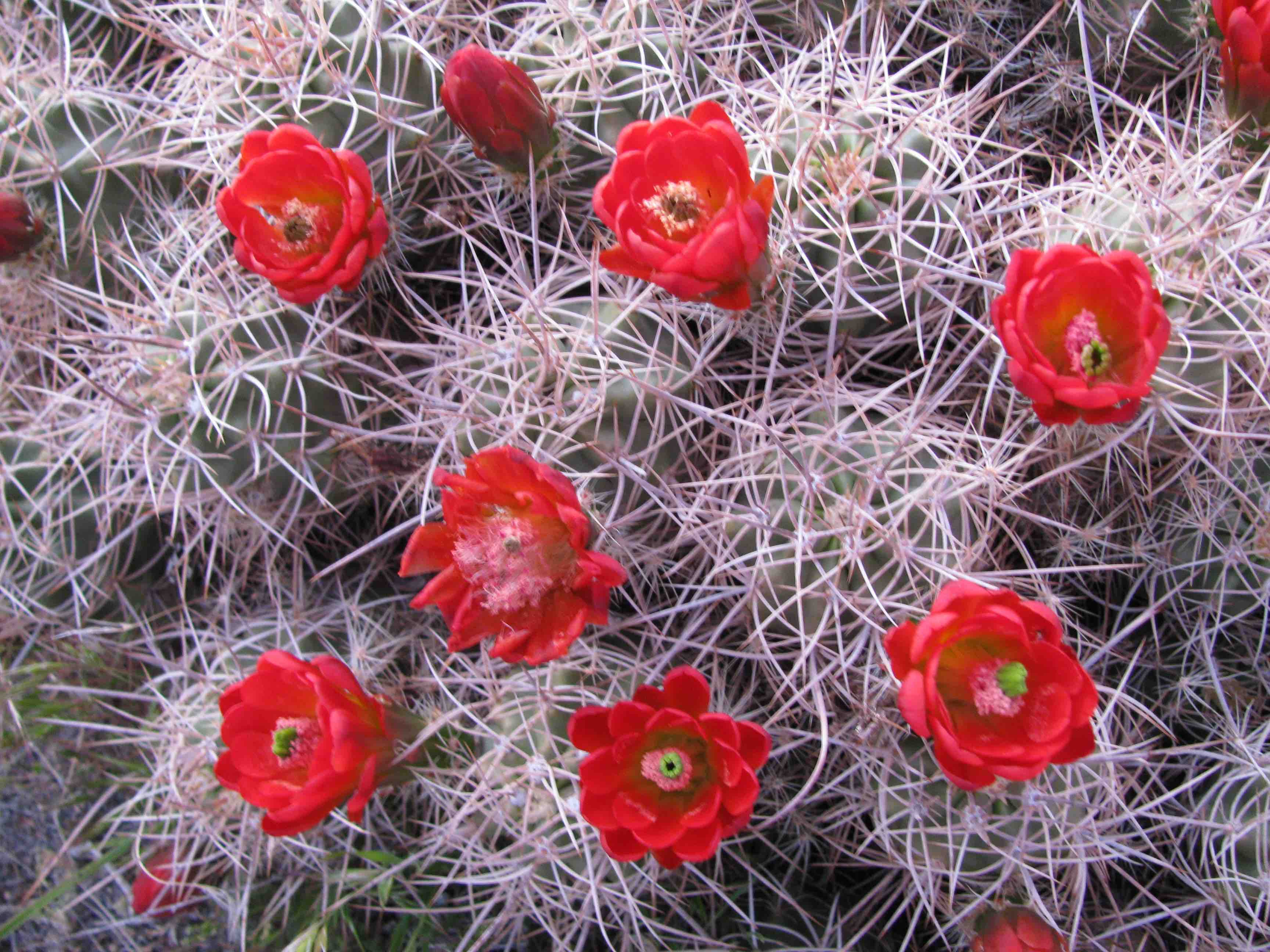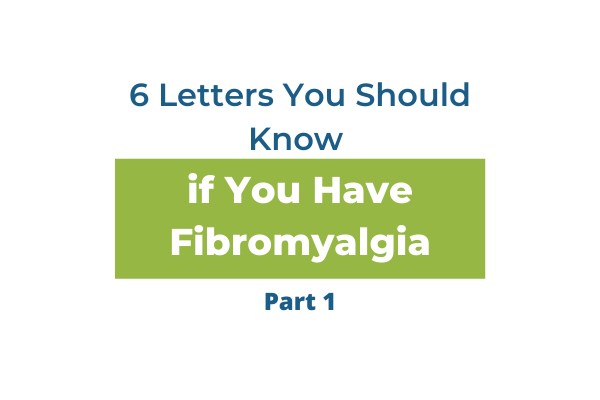
Two Molecules You Should Know
This post talks about two different molecules that help many people with fibromyalgia and other kinds of chronic pain. The six letters you should know are: LDN and PEA These two will be discussed in two different posts, so you can focus on one at a time. As a medical doctor who has treated thousands of people with fibromyalgia and chronic pain, I find LDN and PEA very interesting. The first reason is that there are some research studies showing plausible mechanisms and also clinical effects on pain and other symptoms. The second reason is that they both go “upstream” from the pain symptom and get closer to the root cause of your pain, compared to pain medications.Getting Closer to the Source of Pain
When speaking about “upstream” we mean that they work on one or more of the mechanisms of what causes the pain, rather than just blocking the pain. Let’s try to understand that. The conventional view of fibromyalgia is that the pain processing system is sensitized. This means that things which wouldn’t normally hurt a healthy person, can result in pain in someone with fibromyalgia. But conventional medicine is unable to say why it is sensitized. Despite that, we do have growing research looking at a number of pathways by which the pain processing amplifiers in the brain and spinal cord can be “turned up”. There are potential roles for stress hormones, sleep disturbance, and perhaps most importantly, inflammation. The last twenty or so years have shown an explosion of research showing that “sterile inflammation” or immune imbalance are drivers of most chronic illness. Fibromyalgia included. In the case of fibromyalgia, we know that there are changes in immune chemicals called cytokines. These cytokines are present not only in the peripheral blood but also in the brain and spinal cord. We also have evidence that there is an activation of brain-based immune cells called microglia. Microglial activation causes an increase in a brain-stimulating chemical called glutamate. Too much glutamate creates “excitability” of the brain, and that can explain increased pain, mood changes, and even psychiatric illness, sleep disturbance, irritable bowel syndrome, hormonal abnormalities, and small fiber neuropathy. LDN and PEA both seem to reduce microglial activation and inflammatory cytokines. Both have been shown to reduce pain and help with other symptoms like irritable bowel, mood disturbances, and so on.The First Three Letters You Need to Know: LDN
LDN is “Low Dose Naltrexone.” LDN stimulates your body to produce more of its own natural pain-blocking chemicals called endorphins or enkephalins. These are compounds that are present in your body already. Every organ in your body has receptors for these compounds. There is evidence that many people with fibromyalgia have reduced the activity of endorphins and enkephalins. Besides blocking pain, enkephalins reduce the activity of immune cells that produce inflammatory chemicals. These inflammatory chemicals, called cytokines, have been implicated in many symptoms that are experienced by people with fibromyalgia, including increased pain sensitivity, brain fog, and fatigue. LDN is a totally different thing than the usual use of Naltrexone. In higher doses, naltrexone blocks the body’s opioid system. This is why it is often prescribed by people with substance abuse to help them avoid using alcohol or narcotic drugs. A few decades ago, it was discovered that the same medication could have a profound effect on chronic pain and inflammation when used a much lower dose. That’s how LDN came into use for pain and inflammation.
The Non-Drug, Drug
LDN works in a way that is quite unusual for medications. Most medications have some kind of direct action on the body, and this creates their therapeutic effect. For instance, opioid medicines like Tramadol or Oxycodone directly bind opioid receptors, and that leads to blocking pain signals. Or if you take thyroid replacement, it is processed by your body, and then it binds to thyroid hormone receptors and stimulates cellular activity. In contrast, LDN itself doesn’t block pain or inflammation. It temporarily blocks your opioid receptors for several hours. This triggers your body to produce more of its own naturally occurring opioids. So your body’s own natural opioids block pain and exert the immune-modulating effects of LDN.Does LDN Really Work?
While there is nothing that is 100% effective, LDN works in many cases. The existing clinical trials have shown promising results. LDN appears to reduce pain in people with fibromyalgia, and also reduce inflammatory cytokines in the body. It appears to reduce the activation of glial cells. These are the brain cells that are often overactive in fibromyalgia, and they can contribute to a variety of symptoms, including increased pain and brain fog. Because of its subtle anti-inflammatory effects, LDN is used in a variety of pain and inflammatory syndromes. Small studies have shown benefit in fibromyalgia, chronic fatigue syndrome, depression, chronic regional pain syndrome (CRPS), Crohn’s disease, ulcerative colitis, irritable bowel syndrome, Multiple Sclerosis (improved symptoms), and some skin conditions. In my clinical experience, LDN works very well for many people. In some cases, there are people for whom it has literally made their fibromyalgia “go away”. More commonly, it results in a significant improvement in pain, energy, and often mood. Other diagnoses in which I’ve seen notable improvement include Hashimotos thyroid disease, ulcerative colitis, Crohn’s disease, psoriatic arthritis, osteoarthritis. For people who are interested in a pharmacologic treatment for fibromyalgia, especially patients who are pursuing lifestyle measures in their healing, LDN is my first-line recommendation at this point.Is LDN Safe?
There are well-designed small trials demonstrating clinical effect and mechanism of action. Available evidence suggests that LDN is a safe medication, and naltrexone itself has a long safety record. While there are no large long-term randomized controlled trials of LDN, I suspect that won’t change because it’s a generic drug and there is no profit incentive to pursue large clinical trials.Are There Common Side Effects?
The most common side effects of LDN appear to get better when you stop the medication. Issues that I’ve seen in my practice are similar to what is shown in the available research. That includes vivid dreams, insomnia, increased pain, sleepiness, headache, abdominal discomfort, and nausea. Some people decide not to continue it because of side effects.Conclusion
LDN is a relatively safe, non-typical medication that helps many people with fibromyalgia. The risk/benefit is pretty good compared to the other medications that get used for fibromyalgia. In contrast to typical pain meds, it has minimal likelihood of side-effects like sleepy, groggy, zombie feeling that often happens with Lyrica or Gabapentin. LDN has the advantage of often addressing multiple fibromyalgia symptoms, including pain, irritable bowel, and fatigue. However, because it is ‘off label’, many doctors don’t know about it. So you might have to do some effort to find someone to prescribe it locally. There are some doctors who are willing to prescribe by virtual visit. To find a local doctor who provides it, you may check out the provider directory at the LDN Research Trust website, or feel free to contact my office. Stay tuned for Part 2 where we discuss PEA. You can get notified of when it’s posted, and join the email community at this link: www.whathealsfibromyalgia.com Please feel free to share this article with anyone who you know is suffering from pain or fibromyalgia and could benefit from the information given. You can see a short video that speaks about LDN and Fibromyalgia on my Youtube channel: https://www.youtube.com/watch?v=m_uUkInZ1OQ Note: This article is for informational purposes only. There is no doctor-patient relationship here, and this article is not medical advice. Please consult your doctor about any therapeutic choices you might make. ******REFERENCES
1 Desmeules, Jules, Jocelyne Chabert, Michela Rebsamen, Elisabetta Rapiti, Valerie Piguet, Marie Besson, Pierre Dayer, and Christine Cedraschi. “Central Pain Sensitization, COMT Val158Met Polymorphism, and Emotional Factors in Fibromyalgia.” The Journal of Pain 15, no. 2 (February 2014): 129–35. https://doi.org/10.1016/j.jpain.2013.10.004. 2 Ramanathan, Seethalakshmi, Jaak Panksepp, and Brian Johnson. “Is Fibromyalgia An Endocrine/Endorphin Deficit Disorder? Is Low Dose Naltrexone a New Treatment Option?” Psychosomatics 53, no. 6 (November 2012): 591–94. https://doi.org/10.1016/j.psym.2011.11.006. 3 Üçeyler, Nurcan, Winfried Häuser, and Claudia Sommer. “Systematic Review with Meta-Analysis: Cytokines in Fibromyalgia Syndrome.” BMC Musculoskeletal Disorders 12, no. 1 (December 2011): 245. https://doi.org/10.1186/1471-2474-12-245. 4 Rodriguez-Pintó, Ignasi, Nancy Agmon-Levin, Amital Howard, and Yehuda Shoenfeld. “Fibromyalgia and Cytokines.” Immunology Letters 161, no. 2 (October 2014): 200–203. https://doi.org/10.1016/j.imlet.2014.01.009. 5 Behm, Frederick G, Igor M Gavin, Oleksiy Karpenko, Valerie Lindgren, Sujata Gaitonde, Peter A Gashkoff, and Bruce S Gillis. “Unique Immunologic Patterns in Fibromyalgia.” BMC Clinical Pathology 12, no. 1 (December 2012): 25. https://doi.org/10.1186/1472-6890-12-25. 6 Parkitny, Luke, and Jarred Younger. “Reduced Pro-Inflammatory Cytokines after Eight Weeks of Low-Dose Naltrexone for Fibromyalgia.” Biomedicines 5, no. 4 (April 18, 2017): 16. https://doi.org/10.3390/biomedicines5020016. 7 Younger, Jarred, Luke Parkitny, and David McLain. “The Use of Low-Dose Naltrexone (LDN) as a Novel Anti-Inflammatory Treatment for Chronic Pain.” Clinical Rheumatology 33, no. 4 (April 2014): 451–59. https://doi.org/10.1007/s10067-014-2517-2. 8 Kadetoff, Diana, Jon Lampa, Marie Westman, Magnus Andersson, and Eva Kosek. “Evidence of Central Inflammation in Fibromyalgia — Increased Cerebrospinal Fluid Interleukin-8 Levels.” Journal of Neuroimmunology 242, no. 1–2 (January 2012): 33–38. https://doi.org/10.1016/j.jneuroim.2011.10.013. 9 Albrecht, Daniel S., Anton Forsberg, Angelica Sandström, Courtney Bergan, Diana Kadetoff, Ekaterina Protsenko, Jon Lampa, et al. “Brain Glial Activation in Fibromyalgia – A Multi-Site Positron Emission Tomography Investigation.” Brain, Behavior, and Immunity 75 (January 2019): 72–83. https://doi.org/10.1016/j.bbi.2018.09.018. 10 Patten, D.K., Schultz, B.G., Berlau, D.J., 2018. The Safety and Efficacy of Low-Dose Naltrexone in the Management of Chronic Pain and Inflammation in Multiple Sclerosis, Fibromyalgia, Crohn’s Disease, and Other Chronic Pain Disorders. Pharmacotherapy 38, 382–389. https://doi.org/10.1002/phar.2086 11 Low Dose Naltrexone: Side Effects and Efficacy in Gastrointestinal Disorders [WWW Document], n.d. . IJPC. URL https://ijpc.com/Abstracts/Abstract.cfm?ABS=3116 (accessed 3.1.20).Join my email community and get notified about new content and transformative self-healing skills.
Chronic Pain and Illness? Find The Flowers Among The Thorns, and Choose Health.

 Here is a thought about how you can live better, despite chronic illness or pain. It starts with the well-known fact that your inner reality has a huge impact on your outer reality. The question is, “how do you see yourself in relation to your illness?” Your self-image falls on a spectrum between sick and well, between broken and whole. Your self-image is part of what determines your success in coping, living, healing despite your diagnosis.
Here is a thought about how you can live better, despite chronic illness or pain. It starts with the well-known fact that your inner reality has a huge impact on your outer reality. The question is, “how do you see yourself in relation to your illness?” Your self-image falls on a spectrum between sick and well, between broken and whole. Your self-image is part of what determines your success in coping, living, healing despite your diagnosis.Lets unpack this because its really important.
Living in The World of Brokenness
For many people, the experience of illness is an experience of brokenness. It can triggered by the pain, the fearful diagnosis, difficulty functioning, or uncertainty about the future. The constant feeling of “there’s something wrong with me” can create a tremendous sense of distress. And if you are unable to function as you used to, then there’s another source of distress and suffering. It’s not a good feeling. It can automatically create a sense of vulnerability. A sense of “I need someone to fix me”.
A sense of vulnerability and need could be realistic and a good thing. So if you have a fever and are coughing up green junk and feel exhausted, you get evaluated and a diagnosis of pneumonia and an antibiotic and hopefully you’ll be feeling better soon. And it would be unwise and perhaps dangerous to tell yourself you’re not sick, that you should tough it out and not get professional help.
But there’s a way that “the diagnosis” or focus on the symptom can be a problem. Because sometimes the search for the diagnosis, or the diagnosis itself, takes away your power, and you don’t get anything in return.
Yeah, sometimes the diagnosis hurts you more than it helps you.
Chronic widespread pain (like fibromyalgia) is often an example of that. The problem is a hypersensitivity of the pain pathways. And if you keep trying to find “the diagnosis” or go to another doctor for every symptom of pain, it doesn’t necessarily bring you healing or a cure. Sometimes it is very disempowering. You’re looking for someone to fix you, rather than learning if there is something you can do to help yourself. I can’t count the number of patients who have unsuccessfully gone to specialist after specialist looking to be cured. Each time they get their hopes up, and then they are disappointed.
It can stimulate a spiral of negative thinking.
One big problem with “negative thinking” is that your thoughts can make you sick. Research is now showing your state of mind can have a huge impact on the outcome of chronic illness. Research supports the common sense that there are often better outcomes when the patient is able to connect with their purpose, goals, relationships, and inner resources for healing.
I always share this caveat when I share that idea: If this article is triggering a sense of blaming yourself because you’re stuck in the “sickness cycle”, please stop right now. Beating yourself up about it feeds the problem. It’s not your fault. Most people don’t learn about this until their backs are to the wall. So start to learn. You can do it.
Here’s why its not your fault.
Our medical system is focussed on sickness and finding the expert to fix the sickness.
In medical school we learned to identify people by their problems. We worked hard to efficiently deliver the “problem list” in the context of a case presentation. We’ve got dozens and dozens of 3-4 letter abbreviations for diseases. Sometimes we identify a person by many of them at once. “This is a 63 year old man with COPD, CAD s/p MI, DMII, DVT, Afib with complaints of fatigue.”. When I was in training they didn’t encourage us to refer to people as their illness. We weren’t rewarded for saying things like, “the leukemia in room 214 is complaining of chest pain”, but sadly it was known to happen anyhow.
Maybe you’ve seen more than one medical provider who mainly focussed on your illness. Maybe you got a diagnosis and now you ‘have a herniated disc’ or ‘have fibromyalgia’ or ‘have psoriatic arthritis’. The medical provider probably did very little to connect you with your own resources for healing. It doesn’t surprise me how many of my patients think of themselves as sick. It’s not your fault. You trusted the expert.
Mainstream media and society often support the same unproductive mindset.
The power and miracles of modern medicine have led us to believe that technology will cure everything. And the media love to make us worry, so we tune in and spend money.
Without great wisdom and support, it’s very easy to stay stuck in a sense frustration and grief about what has been lost. And to live in fear about the uncertain future. Life can feel very broken. And that’s a toxic way to live that often feeds into processes that brought us to the illness and pain. And so the cycle continues.
Despite all this, there is another way. We can cultivate and learn to find wholeness despite pain, illness, and suffering. And then we shift the process from a vicious cycle of suffering and sickness, to a process of transformation and healing.
Living in the World of Wholeness.
Even if you have significant illness, you also have abundant health.
You might not be paying attention to it. But it’s there.
Your ability to read and understand this means that you have significant health. Do you have any idea how much neurological complexity and health goes into reading this article?
Its awe-inspiring if you think about the three trillion cells that make up your body, and the innumerable chemical reactions and physiologic processes that are constantly working so you can think, speak, move, eat, digest, breathe, etc. The very fact that you’re alive means that you have abundant health moving through you. And every bit of the health is worth paying attention to.
Because your attention is a key to connecting to your health.
If you take it a step further, and find ways to reconnect to purpose, goals, meaningful relationships, and inner sources of strength, then you’re doing something quite heroic.
You’re beginning to live in wholeness despite your illness or pain.
When you are connected to your health, your sense of wellbeing, you have a sense of wholeness, even if you have an illness or pain. You know there is a part of your being that is unaffected by the illness. Maybe you can even tap into a state of mind where you feel good, confident, clear. You are bigger than the illness. You have purpose and meaning in life. you have tools and inner resources for dealing with the pain, the disability, the infirmity. You have a sense of power, a sense of coherence. You’re resilient. You are whole, despite the parts that are not yet back to 100% function.
It’s a process. And no matter where you are right now, you can start moving toward healing and wholeness.
When you contact your inner resources for healing, the pain and illness becomes a catalyst for growth. Loss, grief, and fear become focal points for transformation. When we crack the shell of darkness, then we find the light that hides inside of it.
And living with a sense of wholeness is not a contradiction to having a diagnosis and getting medical care. This isn’t “either/or”. You can keep going to your doctor and doing the sensible effective biomedical things that support you. This is about addressing the whole picture.
It starts with awareness. You can choose to give your attention to your vitality, to your connection with life.
You can intentionally reconnect with purposeful activities, even if they aren’t the same as the things that used to be meaningful to you.
You can learn to let go of the past. To forgive the people who hurt you. To forgive yourself. To forgive the Source of your life.
You can find opportunities to be in meaningful relationships. Sometimes that means letting go of toxic relationships, and finding healthy ones.
You can learn to bring your awareness to your sensory experience in each moment. To see the flow of thoughts, emotions, and bodily sensation. You can activate your sense of wonder, creativity, and spirituality. Your own inner sense will begin to unravel the knots of suffering and reveal your new connection to life.
You’re developing the power of your mind to access a healing state of mind and body. The research is beginning to show that has a positive impact on the illness itself.
The Timeless Need for Wholeness
The Patriarch Abraham is sitting at the opening of his tent. G-d appears to him. The oral tradition tells us that it is the third day after Abraham circumcised himself in his old age. He is suffering very much. And G-d comes to visit him. We learn about visiting the sick from this episode. But it’s a different kind of visiting the sick that many of us are used to. Usually when we go to the hospital to visit someone who is sick, we ask about their pain, about their diagnosis, about when they can go home. But there is something striking here. The commentator Rashi notes that when G-d went to visit Abraham, he went to “inquire about Avraham’s Shalom”.
Shalom is an interesting word.
Most people know it means “peace” and “hello”. But at its root, it means “wholeness”.
Shalom is a coherent state of being where everything makes sense.
Shalom is the kind of peace that can contain conflict. It’s the wholeness that can contain brokenness. It’s the comfort that can contain the pain of a 80 year old man who just gave himself a painful operation without anesthesia. Shalom comes from being connected to truth, to purpose, to love. It is a sense of coherence.
The Torah is giving us a hint. When we are visiting the sick it’s vitally important to bring their attention to their wholeness. If you are sick yourself, it’s vitally important to pay attention to your wholeness. To find a place of ease and stillness in your spirit, mind, heart, body. To connect to your inner sense of what matters. To remember that you are more than just your illness.
How do You Cultivate Wholeness?
There are many ways to cultivate a sense of wholeness. Perhaps you are already familiar with one or more.
Are you practicing it?
Life is so complex and distracting. Living without a chronic illness or pain is challenging enough in these days. If you have chronic illness or pain, even more-so.
I invite you to recommit to your practice. It could be meditation, time in nature, playing music, prayer, song, journaling, or a combination of these.
Do it regularly. Consistency in key.
If you don’t have a practice, I encourage you to find one.
Even 5 minutes a day is a good start.
A growing body of research shows extraordinary benefits to regular meditation and other mindbody practices. When you regularly access a state of calm, peaceful clarity, it has beneficial effects on inflammation, pain, emotional distress, and even expression of genes that help you cope with and heal from stress, pain, and illness.
An even deeper process happens that may be beyond measurement. When we gently and lovingly turn our own consciousness back in on itself, we naturally heal the roots of our unproductive habits of thinking, feeling, and acting. We gain energy and access to our deeper capacity for beauty, order, generosity, forgiveness, calm, love.
Life becomes a process of living and our external circumstances become less hard and difficult. It can take work, especially if you are suffering. But the rewards are invaluable.
Believe in yourself. Believe in your life. The possibilities are always greater than we imagine.
You might find beautiful red flowers blooming where you once only saw thorns.
And please leave feedback to this article and share it if you see fit.
Wishing you Shalom
Join my email community and get notified about new content and transformative self-healing skills.
Join my email community and get notified about new content and transformative self-healing skills.
I respect your privacy and will never share your email. Unsubscribe any time.

